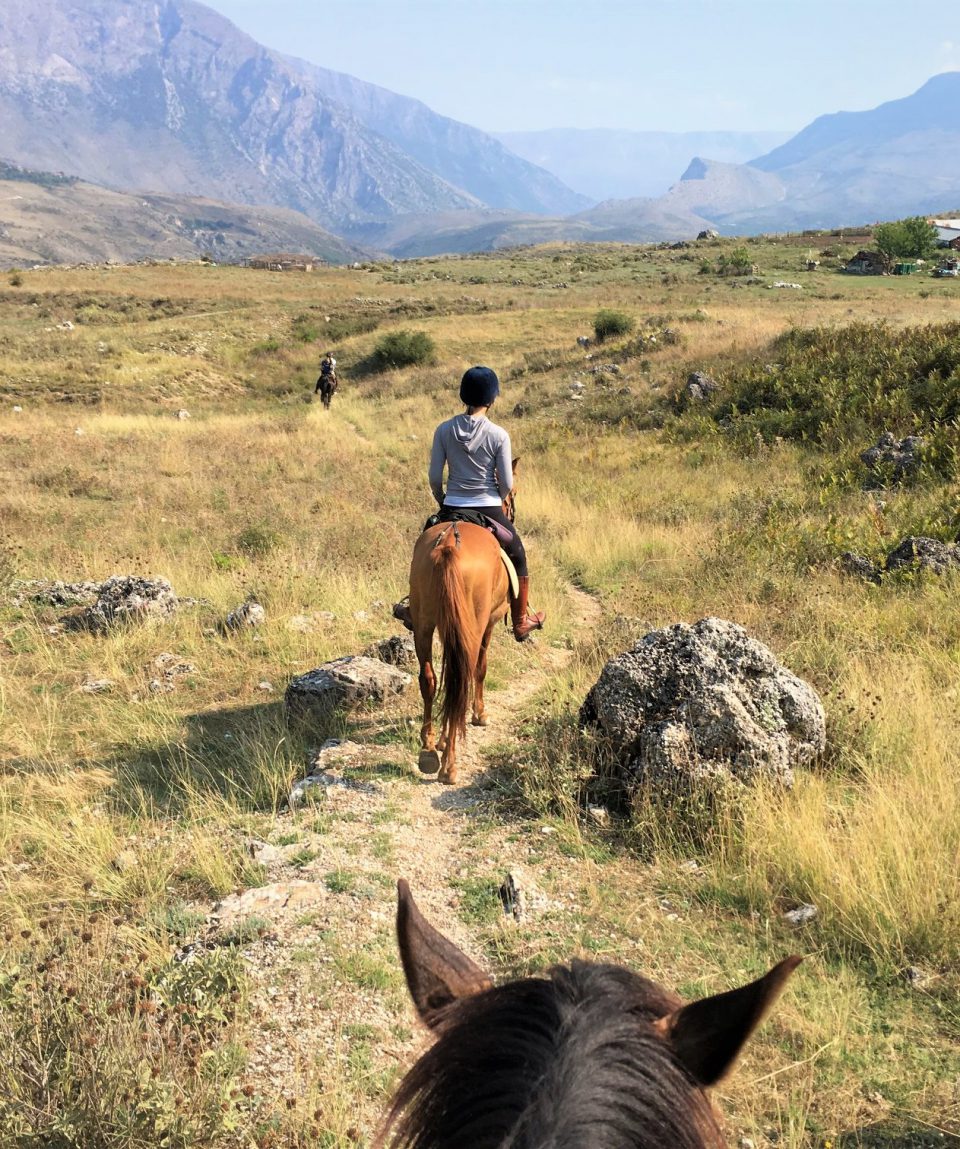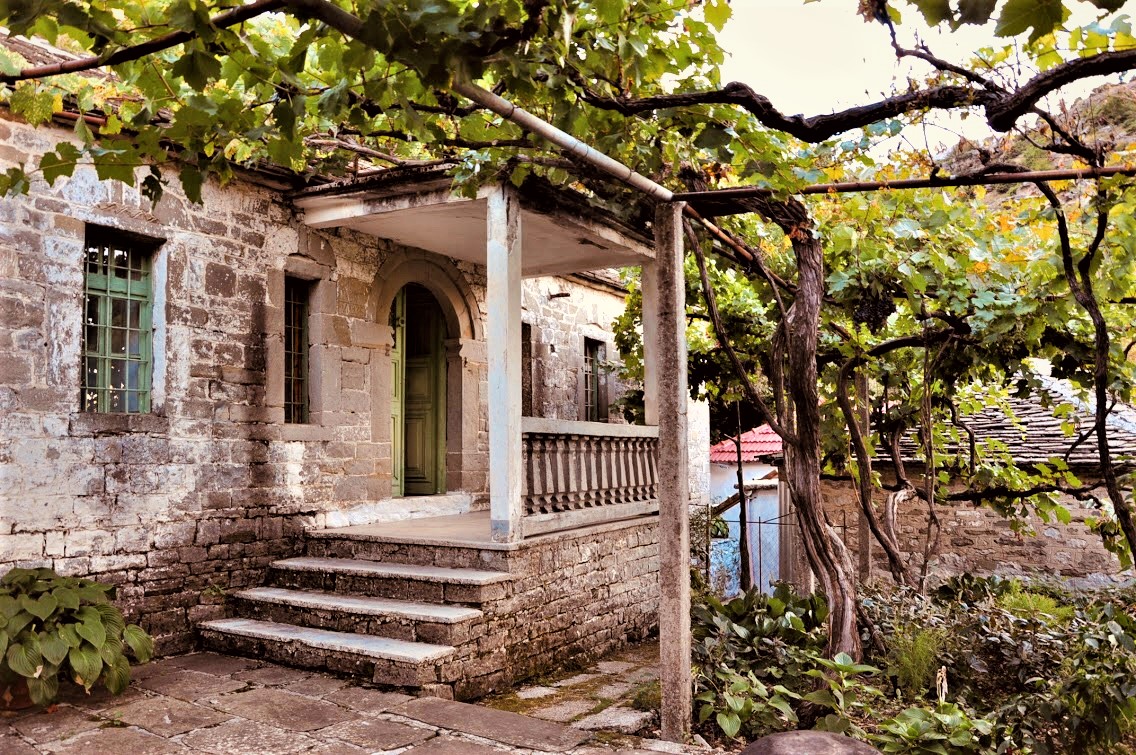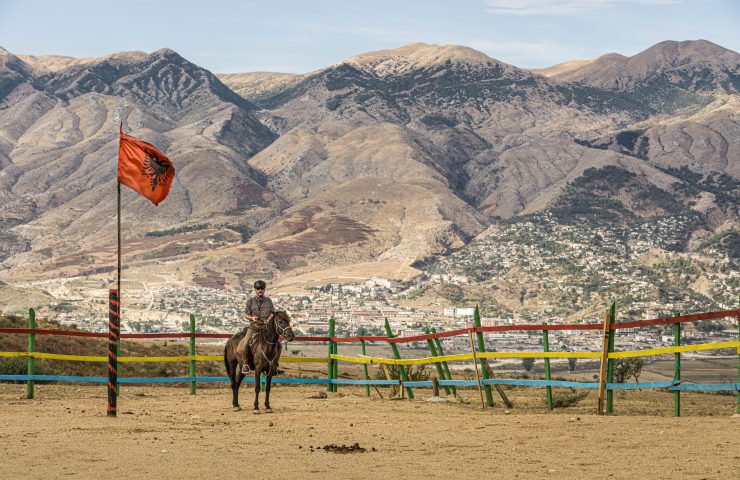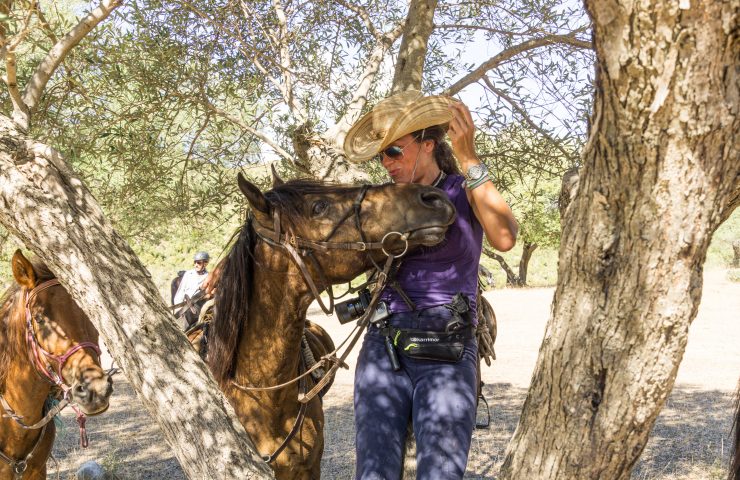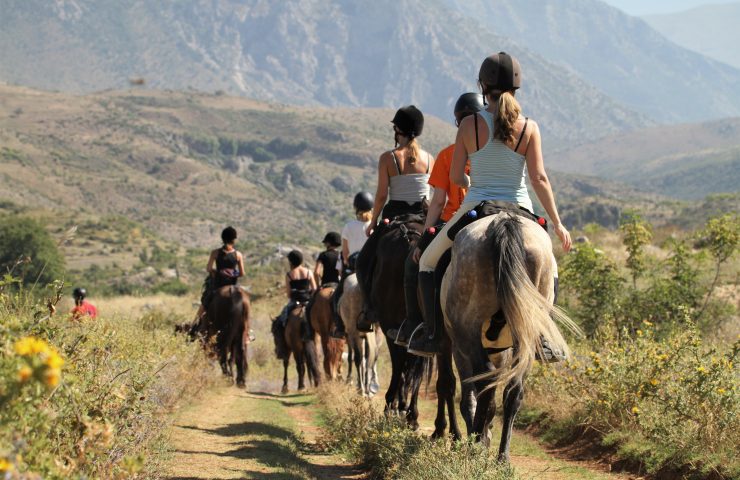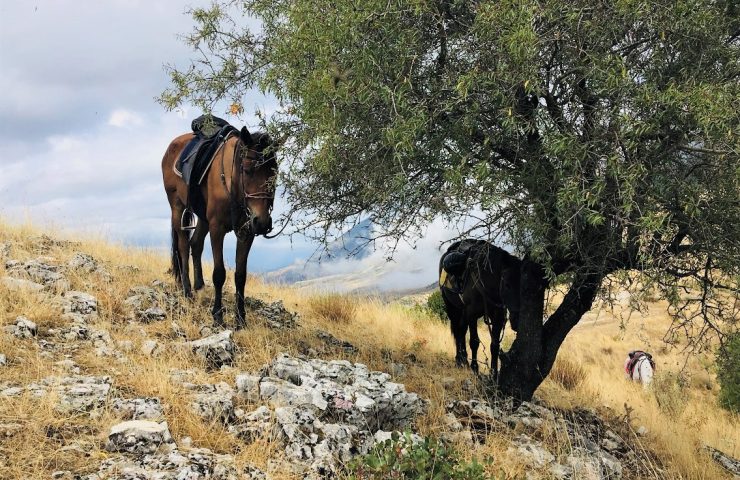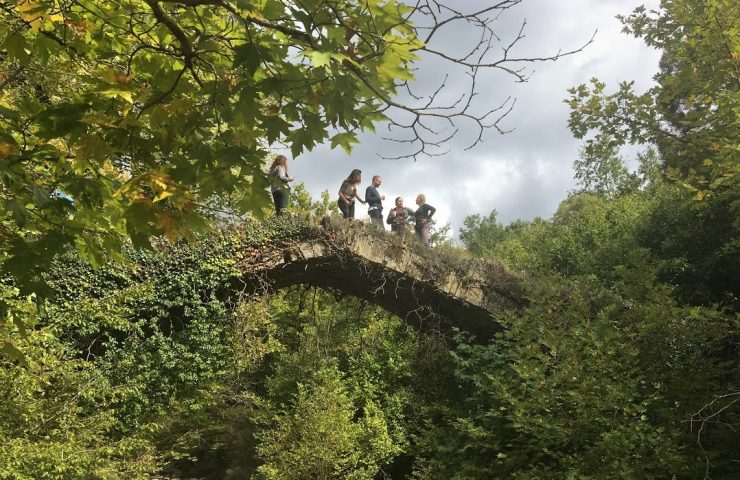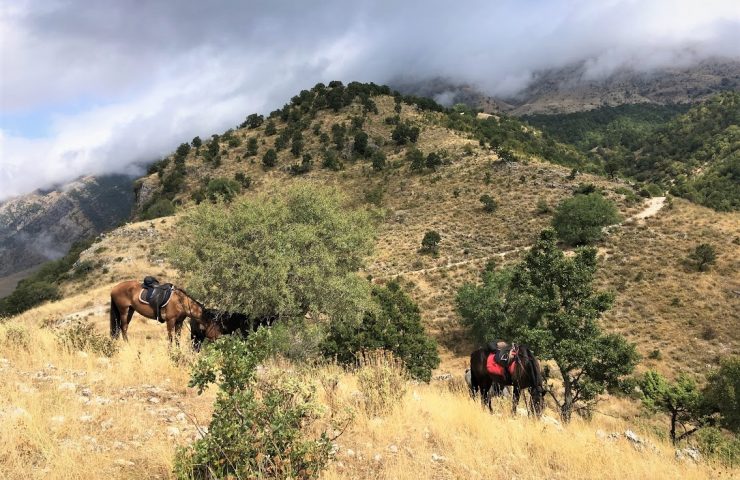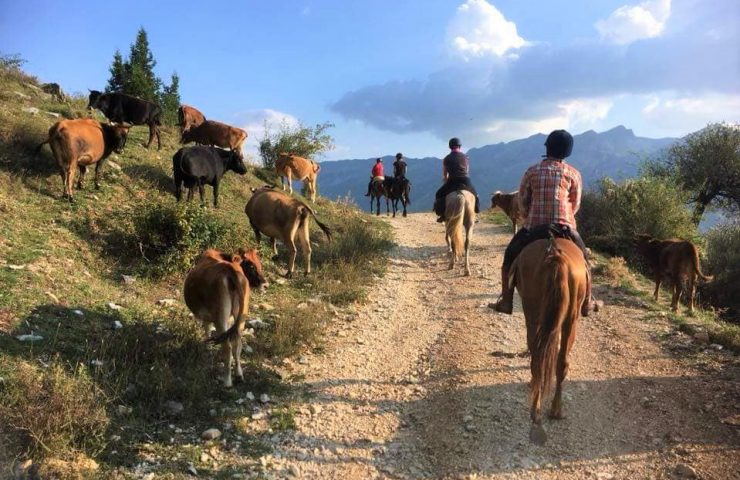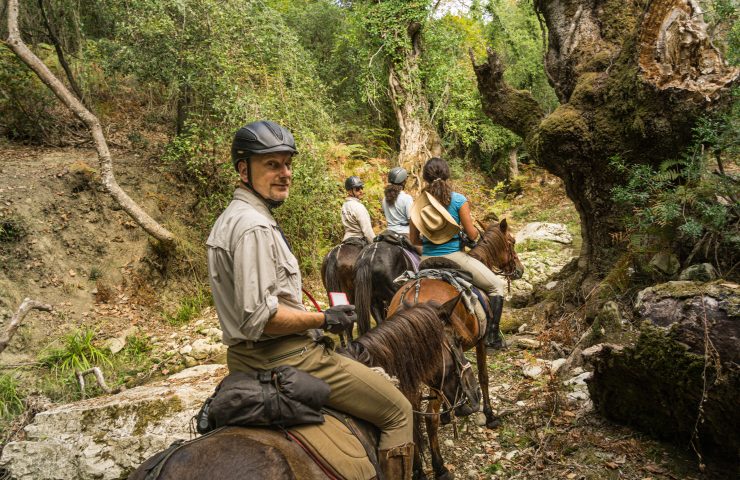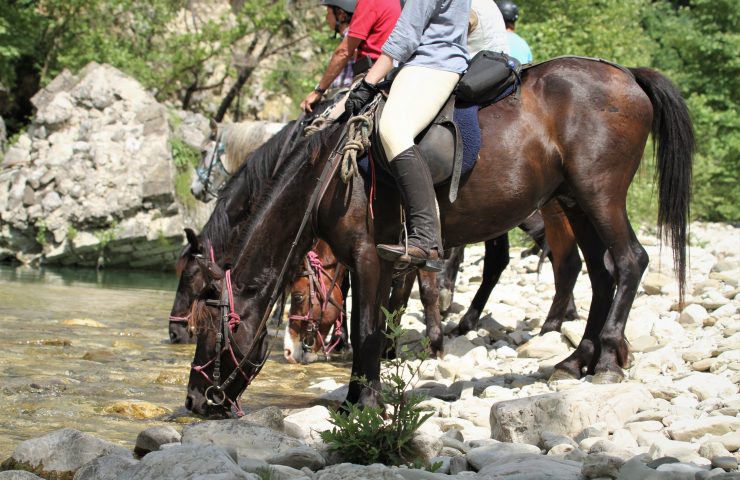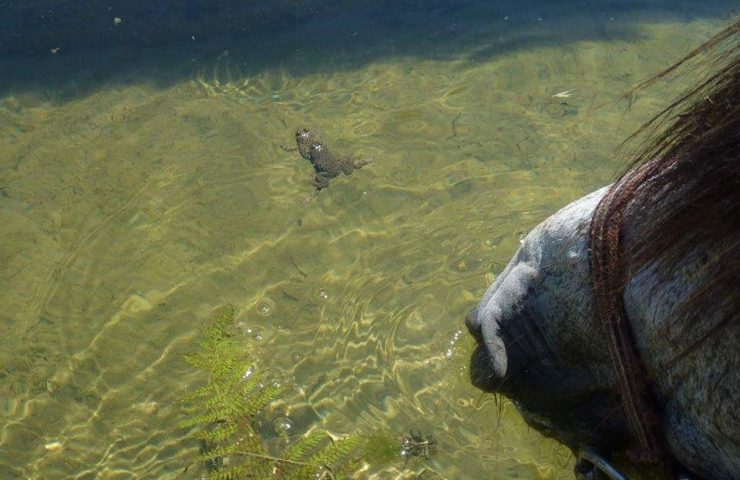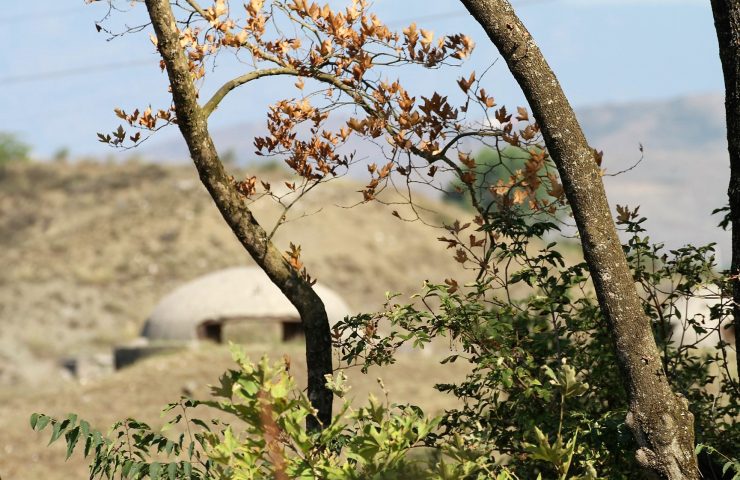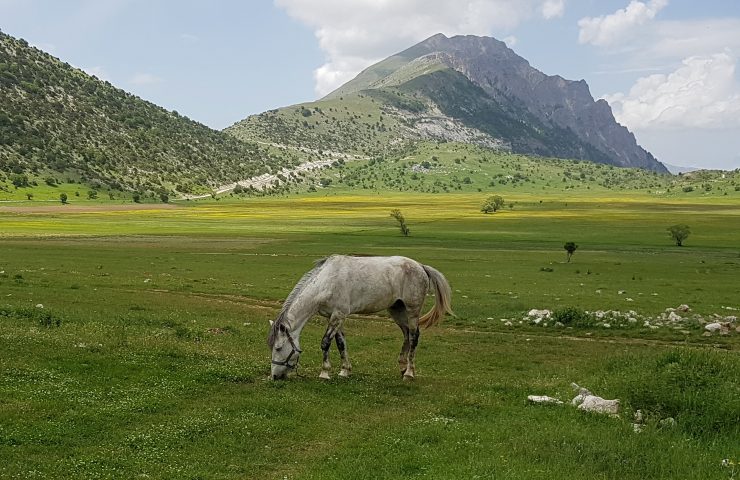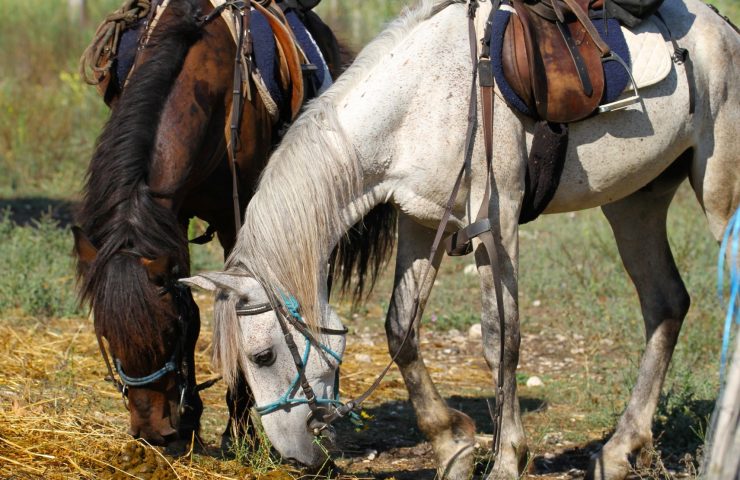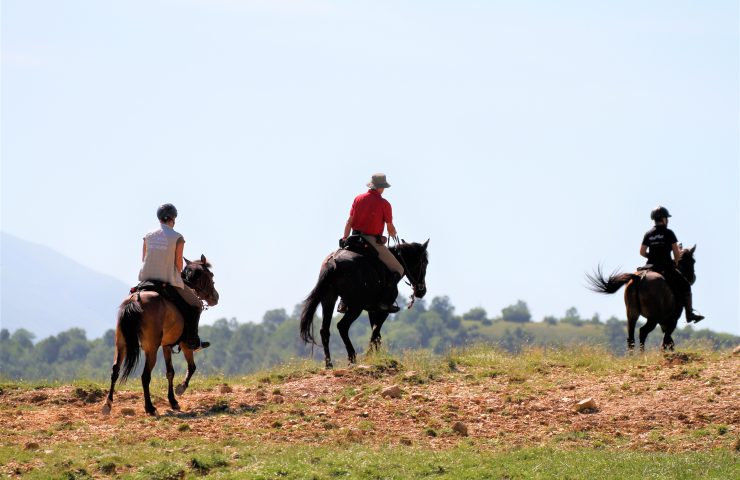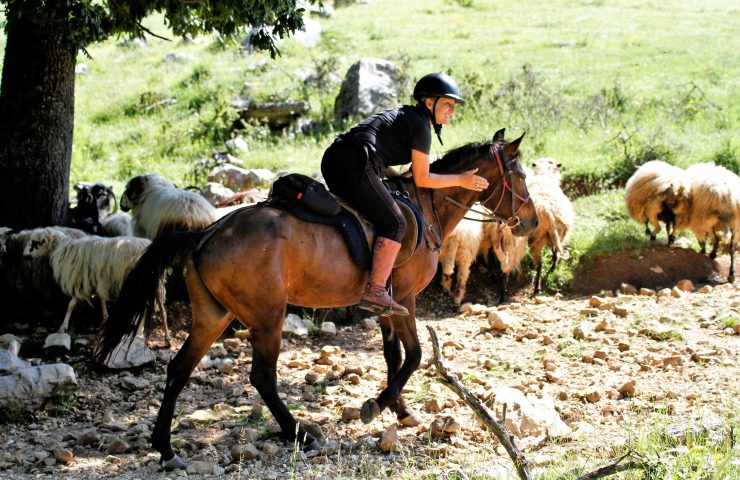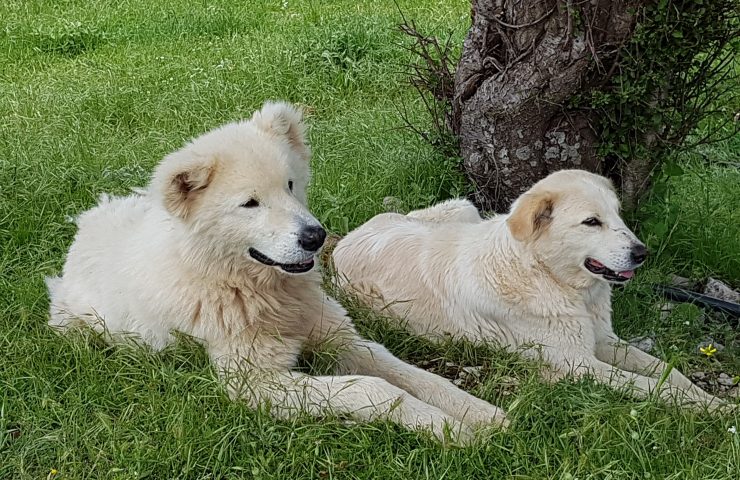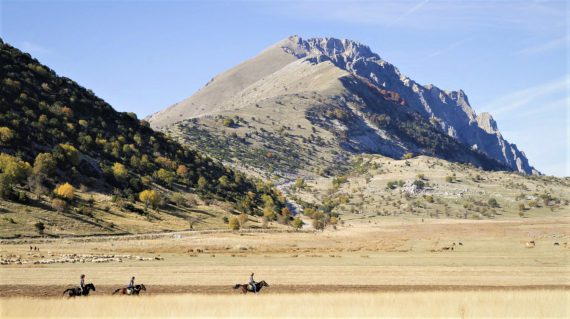
Illyrian Trail
Albania
This trail is a kind of a wayback machine. It runs through ancient Illyrian ruins and medieval villages. We will ride through fairytale-like stone bridges over mountain rivers and visit churches and monasteries built centuries ago, but also run into traces of Albania’s communist past. We will ride into this amazing land on those brave, small-framed horses with huge hearts for riding. Welcome to Albania, the land of myths and tales of the past.
-
Days overall8 daysDays in saddle6
-
Group size10Available
-
StandardBalkan hospitality (under roofs and in bed linen)Luggageno limit kgFoodlocal cuisine, vegetarian and vegan available
-
Skillswalk, trot, canter
We will ride into wild parts of Albania, untouched by human hand, visit natural monuments, villages and towns, spend time with shepherds, meet friendly locals and spend evenings and nights at their homes. We want our riders to experience the real life of Albanian families of different descent, traditions and material status and enjoy the ride through this amazing country.
The guides are trully passionate about horses and riding. Years ago they took on a challenge of recreating the Albanian horse breed (a mix of tarpan and Arab horse) that went on a brink of extinction. They run a breeding programme aimed at recreating the breed for trail riding purposes. As a result you will ride a rather small-framed, but strong, powerful and brave mountain horses.
The trail itself requires good physical condition, some trail riding experience is definitely a good thing. The group will gallop in every suitable spot, turns and small jumps also happen while galloping. We recommend using helmets, especially on the first day, when riders are getting accustomed to the terrain and horses.
Due to relatively small size of local horses, the weight of the rider is limited to 90 kg / 200 lbs.
- Accomodation in a hotel in Gjirokastra and at local hosts’ houses during the trail ride
- Full board (starting with a dinner on arrival day to breakfast on departure day)
- Local, English-speaking guides for the entire trek
- A horse with full tack and equipment
- Tourist insurance covering high-risk sports
- Flight tickets to and from Tirana / Flight tickets to and from Korfu and ferry to Saranda
- Transfer to and from Tirana (around 90 Euro) or Saranda (around 50 Euro)
- Entry tickets to Antigonea and donations in churches along the way (around 15 Euro in change)
- Optional: single room supplement (25 Euro per night, where available, paid on the spot)
- Minor expenses (souvenirs, additional snacks, admission tickets in free time, etc.)
- Optional: tips for guides
- Day 1 Gjirokastër
- Day 2 The Tree Of Life
- Day 3 Caravan path
- Day 4 Treasures of Southern Albania
- Day 5 Time travel
- Day 6 Following in the footsteps of Justinian and Theodora
- Day 7 Last canters
- Day 8 Farewell to Albania

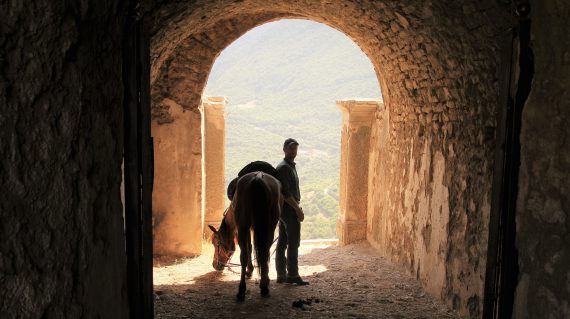
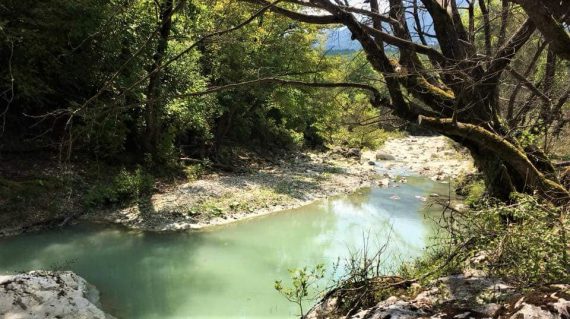
Riders spend the first and the last night at a hotel in Gjirokastra. On the horse trail we stay with local families, at their homes. The standard differs, but we always have a roof over our heads, beds with linen to sleep in and local dishes to enjoy. Rooms are shared, single rooms are available on the first and last night (25 Euro per night). We taste local food and accompany local Albanians in their everyday, routine tasks.
The traditional Albanian quisine is based on different meat and various, delicious types of cheese. Ecological fruits and vegetables, honey, jams, eggs, bread, desserts and sweets will be served, too. We will drink local water, herbs brews, and – of course – local wine and raki.
Equipment
You will ride in good quality English-type trail saddles. Bridles are of regular construction, we use bits. The equipment in general is what most riders are used to.
Every horse is equipped with small saddlebags for water and takeway food (sometimes we eat in the wild, sometimes are hosted for lunch). Additional straps (for attaching a raincoat) might come in handy.
Please note: we recommend using a helmet while riding.
What you should take with you
The tour in Albania is quite comfortable – as for a trail ride. A car transports all our belongings between particular spots. Every night the group is hosted at houses, no need for sleeping bags and mats. During the day you will need only the basic personal belonging (documents, mobiles,), everything else will be waiting at the destination point in the evening.
- passport
- some cash, Euro is common in Albania
- electronics – mobile, camera
- flashlight, headlamps are handy
- a canteen or other water containers (it might be an empty plastic bottle)
- sunscreen
- swimsuit
- head cover (against heat and Sun)
- riding clothes (breeches, gloves, helmet, etc.,)
- trekking shoes/boots
- lightweight raincoat
- flip-flops
-
fot. z archiwum przewodnika
-
fot. z archiwum przewodnika
-
fot. z archiwum przewodnika
-
fot. Katarzyna Kurdziel
-
fot. z archiwum przewodnika
-
fot. Katarzyna Kurdziel
-
fot. z archiwum przewodnika
-
fot. Katarzyna Kurdziel
-
fot. z archiwum przewodnika
-
fot. z archiwum przewodnika
-
fot. z archiwum przewodnika
-
fot. z archiwum przewodnika
-
fot. z archiwum przewodnika
-
fot. z archiwum przewodnika
-
fot. z archiwum przewodnika
-
fot. z archiwum przewodnika
-
fot. z archiwum przewodnika
-
fot. z archiwum przewodnika
| Date | Trip Status | Price | Spots | |
|---|---|---|---|---|
11 May 2024 - 18 May 2024
|
Full group |
1260 € |
0 |
|
25 May 2024 - 1 June 2024
|
Full group |
1260 € |
0 |
|
8 June 2024 - 15 June 2024
|
Full group |
1260 € |
0 |
|
22 June 2024 - 29 June 2024
|
Full group |
1260 € |
0 |
|
6 July 2024 - 13 July 2024
|
Available |
1260 € |
3 |
|
3 August 2024 - 10 August 2024
|
Full group |
1260 € |
0 |
|
31 August 2024 - 7 September 2024
|
Available |
1260 € |
2 |
|
14 September 2024 - 21 September 2024
|
Available |
1260 € |
0 |
|
28 September 2024 - 5 October 2024
|
Full group |
1260 € |
0 |
|
26 October 2024 - 2 November 2024
|
Available |
1260 € |
9 |
|
2 November 2024 - 9 November 2024
|
Available |
1260 € |
9 |
|
9 November 2024 - 16 November 2024
|
Available |
1260 € |
10 |
|
16 November 2024 - 23 November 2024
|
Available |
1260 € |
7 |
|
23 November 2024 - 30 November 2024
|
Available |
1260 € |
10 |
